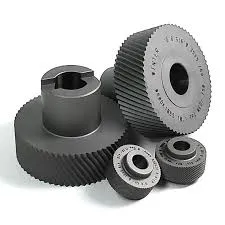
-
 Afrikaans
Afrikaans -
 Albanian
Albanian -
 Amharic
Amharic -
 Arabic
Arabic -
 Armenian
Armenian -
 Azerbaijani
Azerbaijani -
 Basque
Basque -
 Belarusian
Belarusian -
 Bengali
Bengali -
 Bosnian
Bosnian -
 Bulgarian
Bulgarian -
 Catalan
Catalan -
 Cebuano
Cebuano -
 Corsican
Corsican -
 Croatian
Croatian -
 Czech
Czech -
 Danish
Danish -
 Dutch
Dutch -
 English
English -
 Esperanto
Esperanto -
 Estonian
Estonian -
 Finnish
Finnish -
 French
French -
 Frisian
Frisian -
 Galician
Galician -
 Georgian
Georgian -
 German
German -
 Greek
Greek -
 Gujarati
Gujarati -
 Haitian Creole
Haitian Creole -
 hausa
hausa -
 hawaiian
hawaiian -
 Hebrew
Hebrew -
 Hindi
Hindi -
 Miao
Miao -
 Hungarian
Hungarian -
 Icelandic
Icelandic -
 igbo
igbo -
 Indonesian
Indonesian -
 irish
irish -
 Italian
Italian -
 Japanese
Japanese -
 Javanese
Javanese -
 Kannada
Kannada -
 kazakh
kazakh -
 Khmer
Khmer -
 Rwandese
Rwandese -
 Korean
Korean -
 Kurdish
Kurdish -
 Kyrgyz
Kyrgyz -
 Lao
Lao -
 Latin
Latin -
 Latvian
Latvian -
 Lithuanian
Lithuanian -
 Luxembourgish
Luxembourgish -
 Macedonian
Macedonian -
 Malgashi
Malgashi -
 Malay
Malay -
 Malayalam
Malayalam -
 Maltese
Maltese -
 Maori
Maori -
 Marathi
Marathi -
 Mongolian
Mongolian -
 Myanmar
Myanmar -
 Nepali
Nepali -
 Norwegian
Norwegian -
 Norwegian
Norwegian -
 Occitan
Occitan -
 Pashto
Pashto -
 Persian
Persian -
 Polish
Polish -
 Portuguese
Portuguese -
 Punjabi
Punjabi -
 Romanian
Romanian -
 Russian
Russian -
 Samoan
Samoan -
 Scottish Gaelic
Scottish Gaelic -
 Serbian
Serbian -
 Sesotho
Sesotho -
 Shona
Shona -
 Sindhi
Sindhi -
 Sinhala
Sinhala -
 Slovak
Slovak -
 Slovenian
Slovenian -
 Somali
Somali -
 Spanish
Spanish -
 Sundanese
Sundanese -
 Swahili
Swahili -
 Swedish
Swedish -
 Tagalog
Tagalog -
 Tajik
Tajik -
 Tamil
Tamil -
 Tatar
Tatar -
 Telugu
Telugu -
 Thai
Thai -
 Turkish
Turkish -
 Turkmen
Turkmen -
 Ukrainian
Ukrainian -
 Urdu
Urdu -
 Uighur
Uighur -
 Uzbek
Uzbek -
 Vietnamese
Vietnamese -
 Welsh
Welsh -
 Bantu
Bantu -
 Yiddish
Yiddish -
 Yoruba
Yoruba -
 Zulu
Zulu
Famous Flat Die Thread Rolling Machine | Precision Thread Rolling Solutions
The Famous Flat Die Thread Rolling Machine A Revolution in Fastening Technology
In the world of manufacturing and metalworking, thread rolling has emerged as one of the most efficient methods for producing high-quality threads. Among the various machines available for this purpose, the flat die thread rolling machine stands out. Renowned for its precision and efficiency, this machine has become indispensable in industries ranging from automotive to aerospace.
Understanding the Flat Die Thread Rolling Process
The flat die thread rolling machine operates on a straightforward yet effective principle. It uses two flat dies, which are precisely machined to the desired thread profile. As the workpiece, typically a metal rod or bar, is fed into the machine, it is rolled between the two dies. The pressure applied by the dies displaces the material, forming threads without removing any metal, which is a significant advantage over traditional cutting methods.
This method not only ensures better dimensional accuracy but also enhances the mechanical properties of the threads. Since the material is cold-worked during the rolling process, it typically undergoes strain hardening, resulting in stronger threads that can better withstand fatigue and wear. This aspect makes the flat die thread rolling machine a preferred choice for applications requiring robust fasteners.
Key Advantages of Flat Die Thread Rolling Machines
1. Increased Production Efficiency One of the most significant advantages of flat die thread rolling machines is their ability to produce large quantities of threaded components rapidly. The continuous nature of the rolling process allows for high-speed operation, significantly reducing cycle times compared to traditional machining.
famous flat die thread rolling machine

2. Cost-Effectiveness While the initial investment in a flat die thread rolling machine can be higher than that of conventional threading machines, the long-term savings in material and labor costs are substantial. By minimizing material waste and maximizing production efficiency, manufacturers can achieve a higher return on investment.
3. Superior Thread Quality The threads produced by flat die machines are known for their exceptional quality. The absence of cutting tools means there are no burrs or chips, resulting in cleaner threads that require less finishing. This factor is crucial for industries where precise tolerances are mandatory.
4. Versatile Applications Flat die thread rolling machines are not limited to producing standard threads. They can be configured to create custom profiles, making them suitable for various applications, including bolts, screws, and specialized fasteners.
Conclusion
The famous flat die thread rolling machine has established itself as a cornerstone of modern manufacturing. By combining efficiency, accuracy, and versatility, it has transformed the way threaded components are produced. As industries continue to demand higher quality and performance, these machines are expected to play an increasingly vital role in meeting those requirements.
In a world where precision engineering is paramount, understanding and utilizing advanced technologies such as flat die thread rolling is essential. Whether you're a manufacturer looking to enhance production capabilities or an engineer exploring fastening solutions, delving into the benefits of flat die thread rolling machines could lead to substantial improvements in both product quality and operational efficiency. With ongoing advancements in technology, the future of thread rolling is bright, promising even more innovations that can reshape the landscape of manufacturing.
